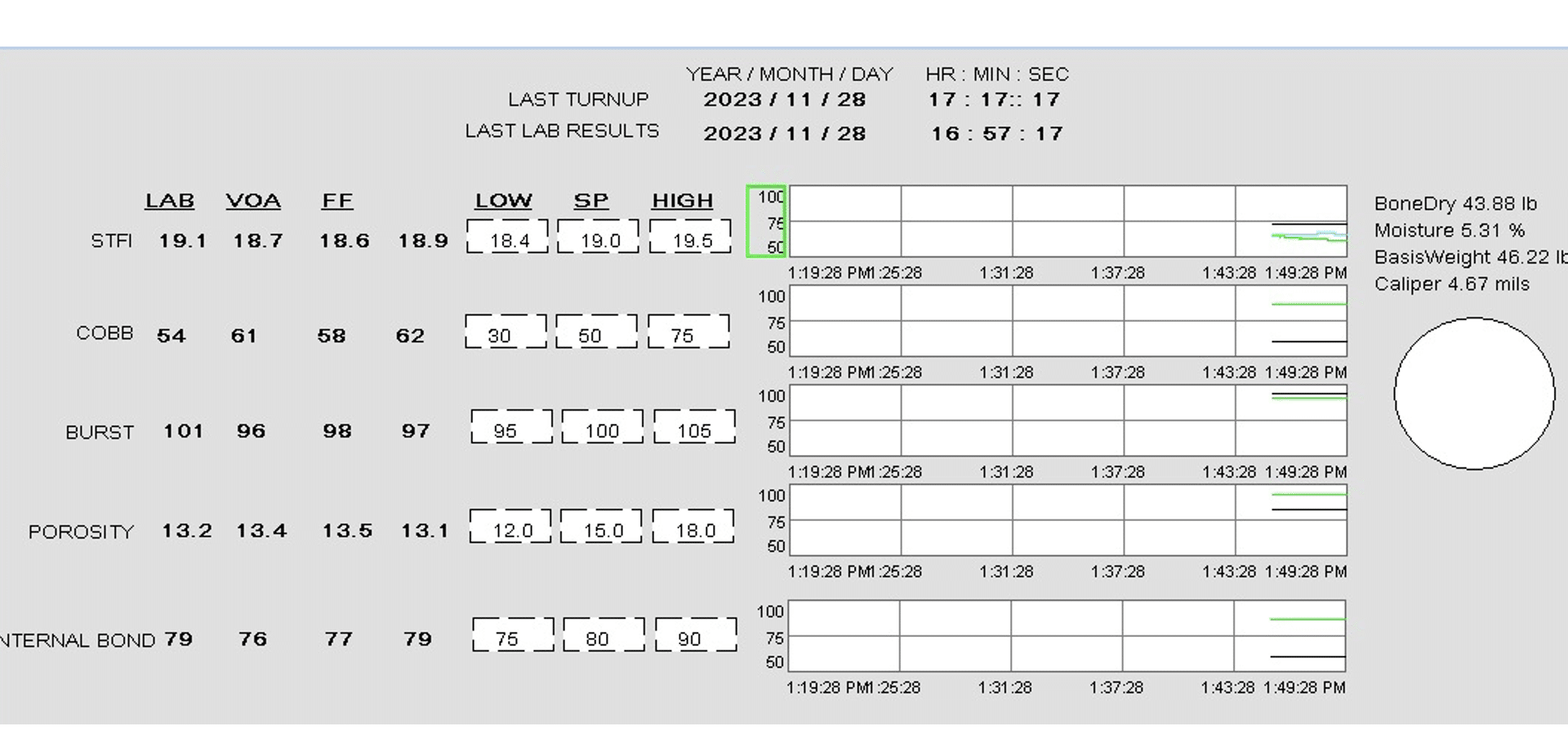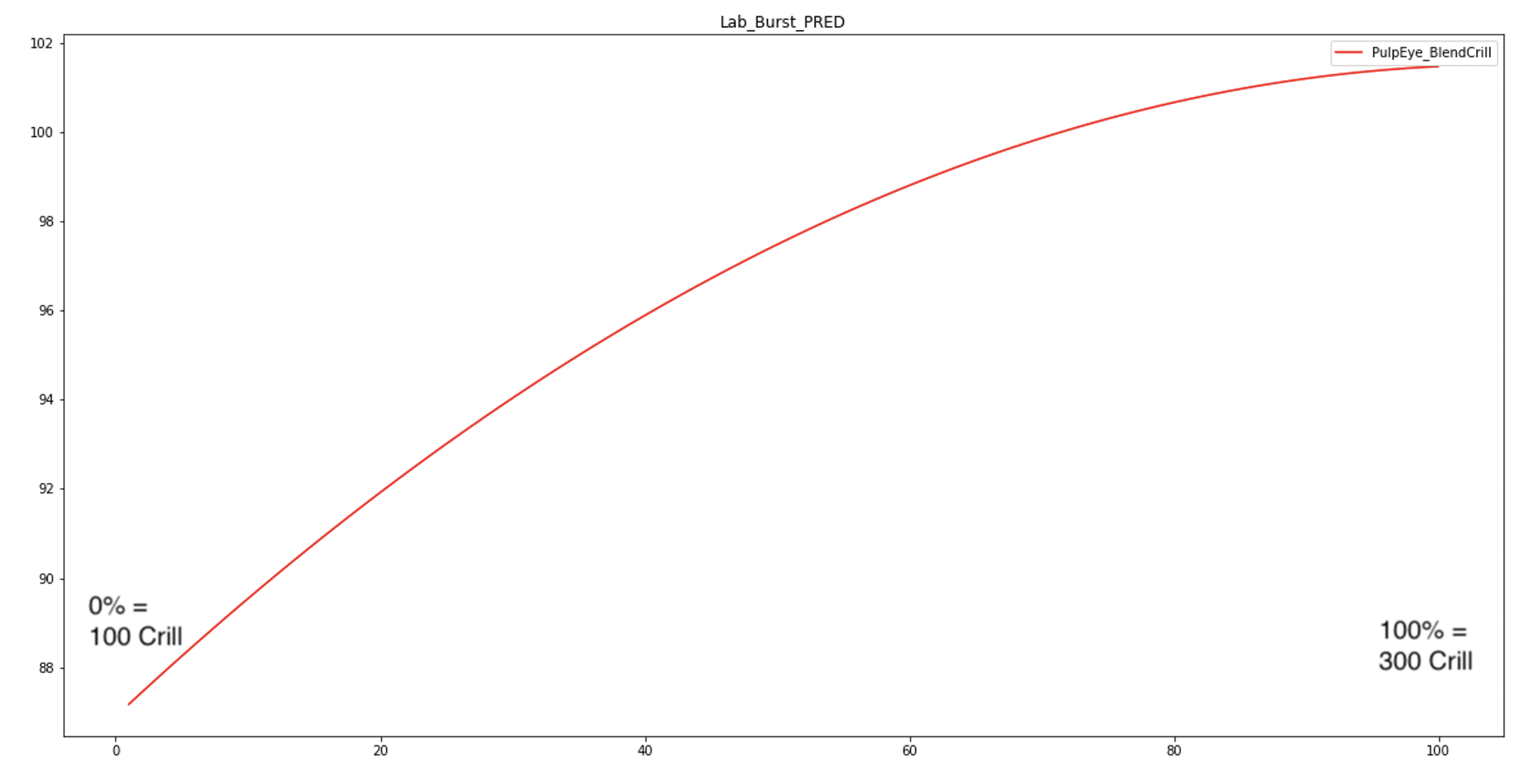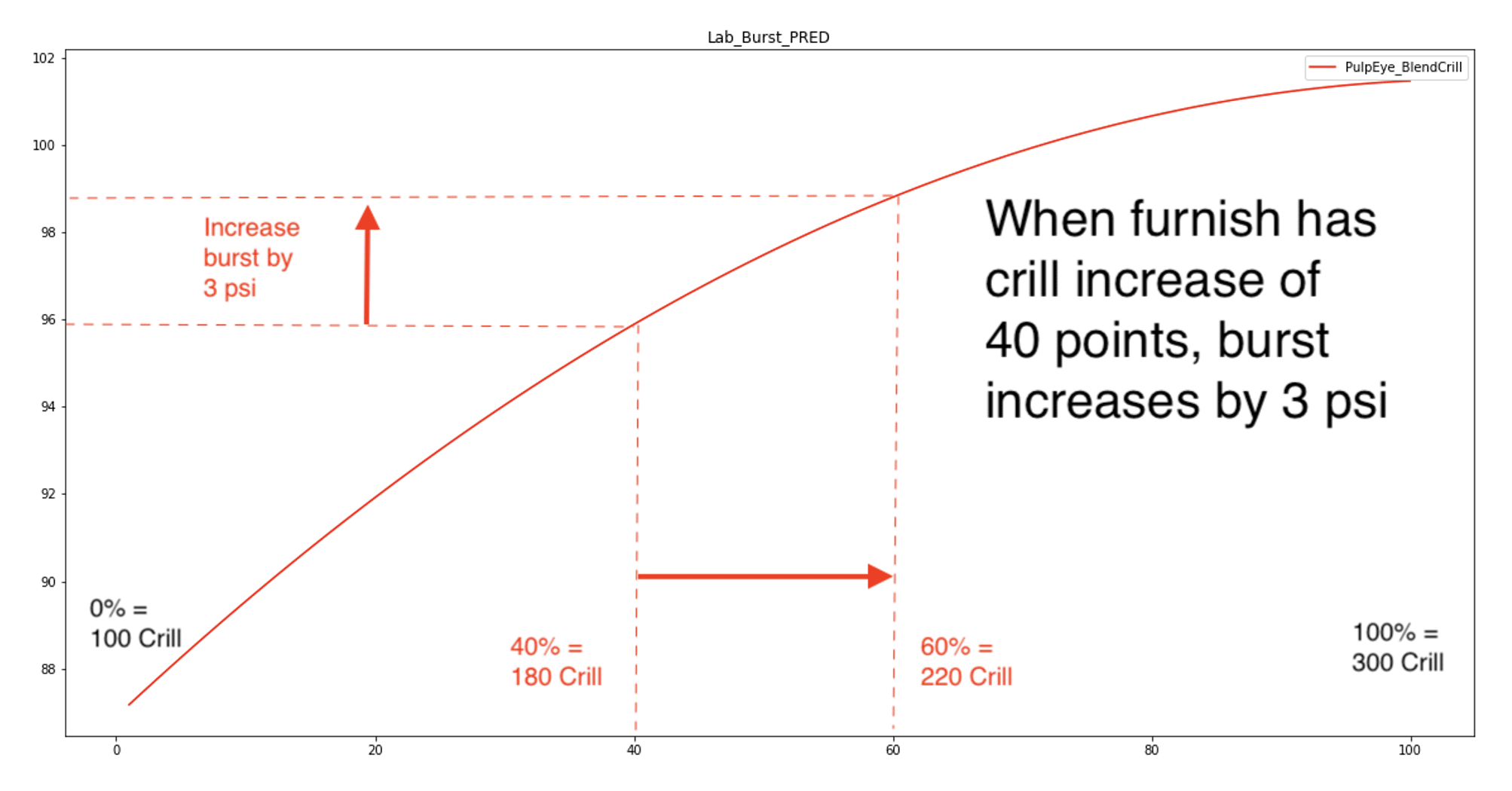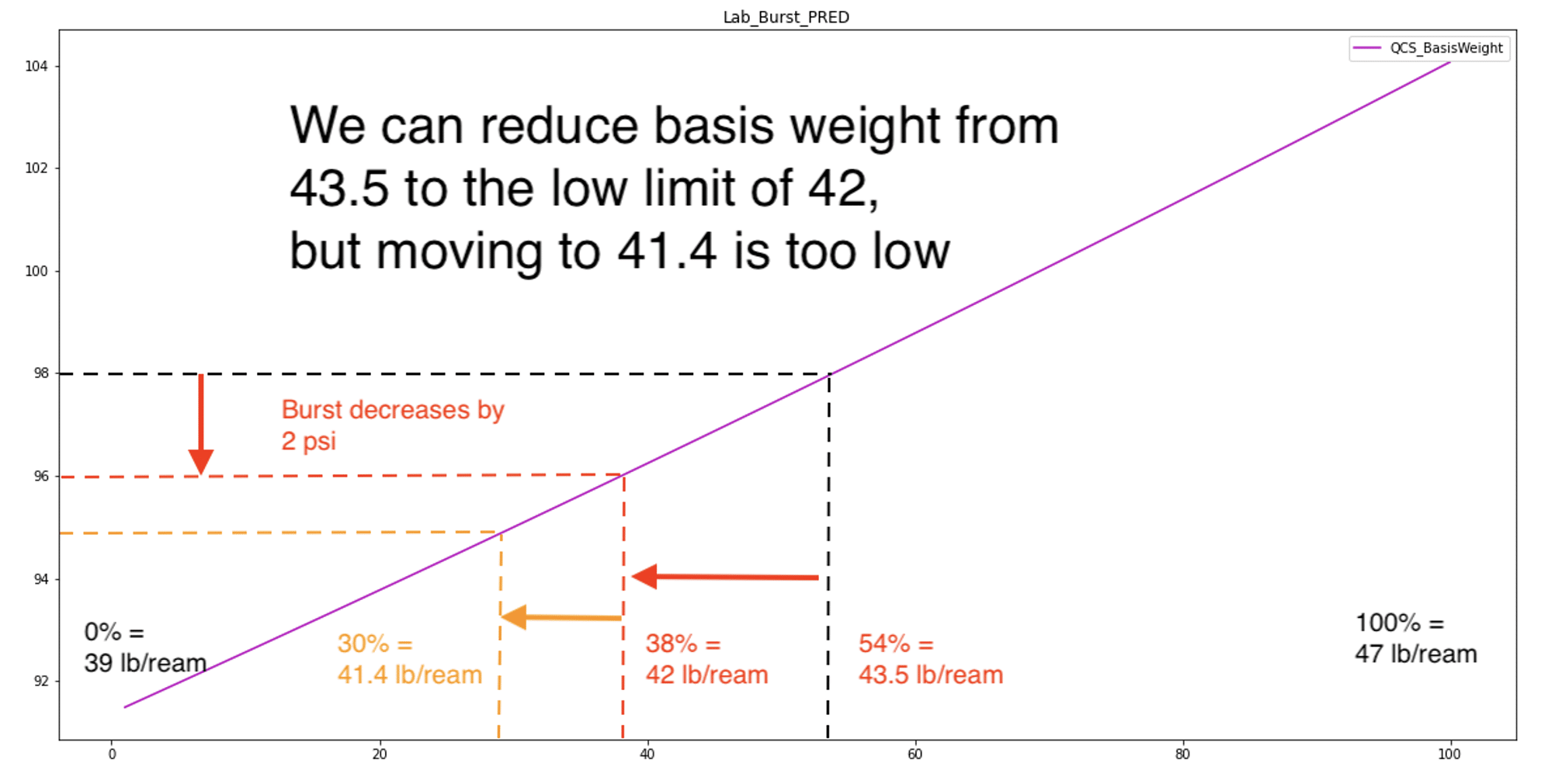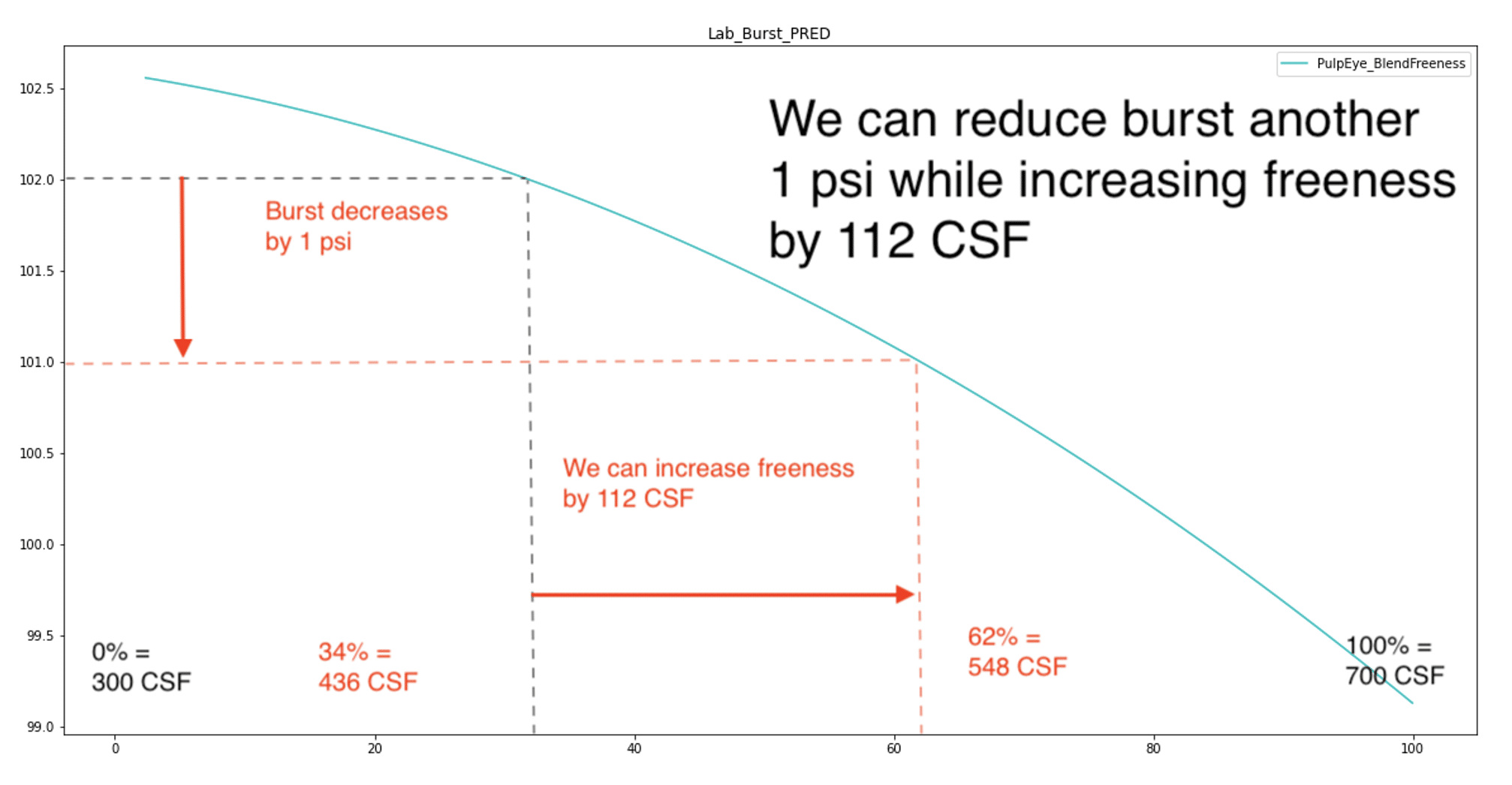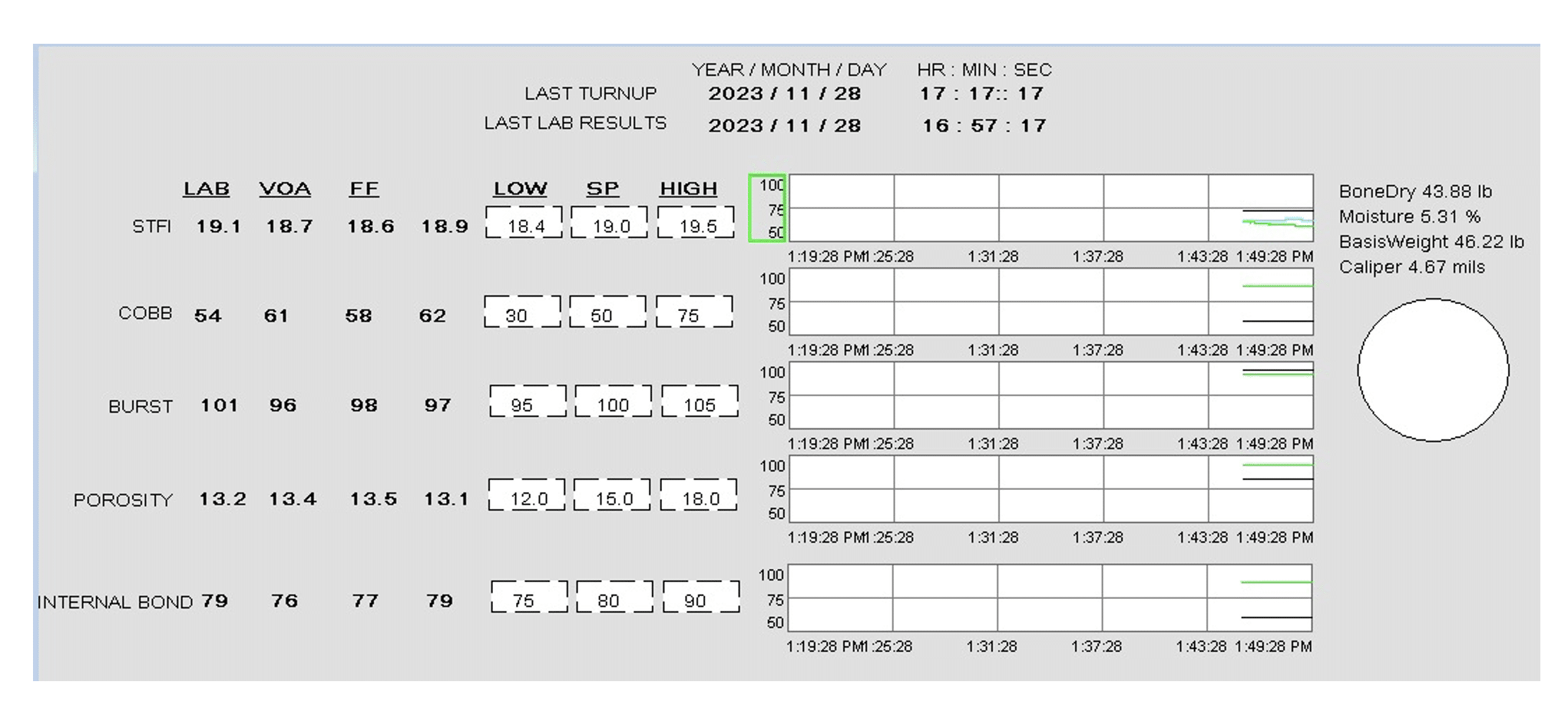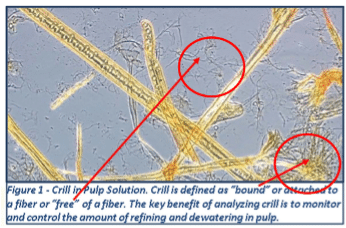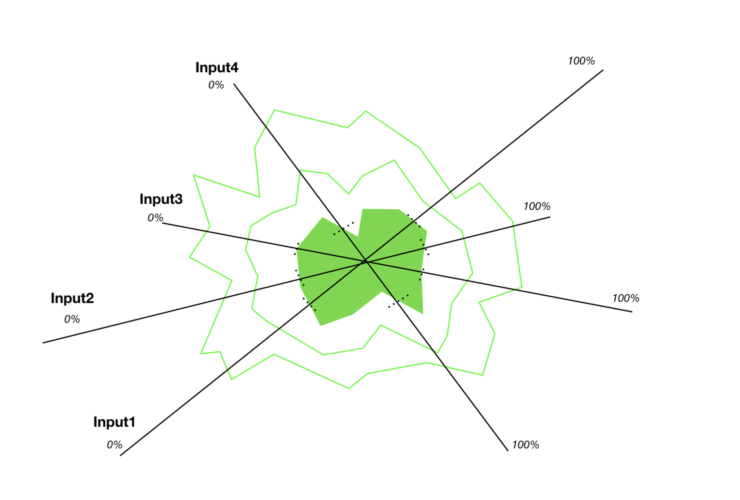This paper will use a hypothetical example to show how to save over $3 Million per year in paper machine production costs with a typical payback period of 6 months.
Fundamental to this solution is the measurement of crill. We have posted many articles and presentations describing the importance of crill to raise awareness on a phenomenon not easily measurable in-process until recently. It is now being recognized in the industry as a significant fiber property. The author is currently engaged with a TAPPI committee revising TIP 0508-02, which will include a formal definition of crill. Crill is not typically a property that can be altered. Like fiber length, it is an inherent property of the fiber source.
Does this mean crill cannot be used in an automated solution? The answer is that Pulmac can apply crill measurement in an automated solution to optimize your process.
This paper uses simulated data to demonstrate the potential benefit of this automation. The example given is a hypothetical linerboard grade. The analysis below shows the fundamental principles and detailed methodology for determining economic benefit.
Since PulpEye is the only system on the market that can measure crill inline, Pulmac can uniquely utilize crill in an automated solution. This is done by developing dynamic control models to predict product quality.
Below is an example of such a model built in Seeq. Seeq is a Pulmac partner providing a comprehensive data analytics platform. Seeq can connect to historical data from your control system, QCS, PulpEye, and quality lab and do all the pre-processing to identify the time periods applicable for modeling and dynamically align data so that deadtime and lags are accounted for. These examples use simulated data, not from an actual process, to demonstrate the capabilities. In the gain plot below, we can see all the inputs to a model predicting burst strength. This plot shows how all the inputs over the range of 0% to 100% of their span (X-axis) relate to the lab burst strength in units of psi (Y-axis).
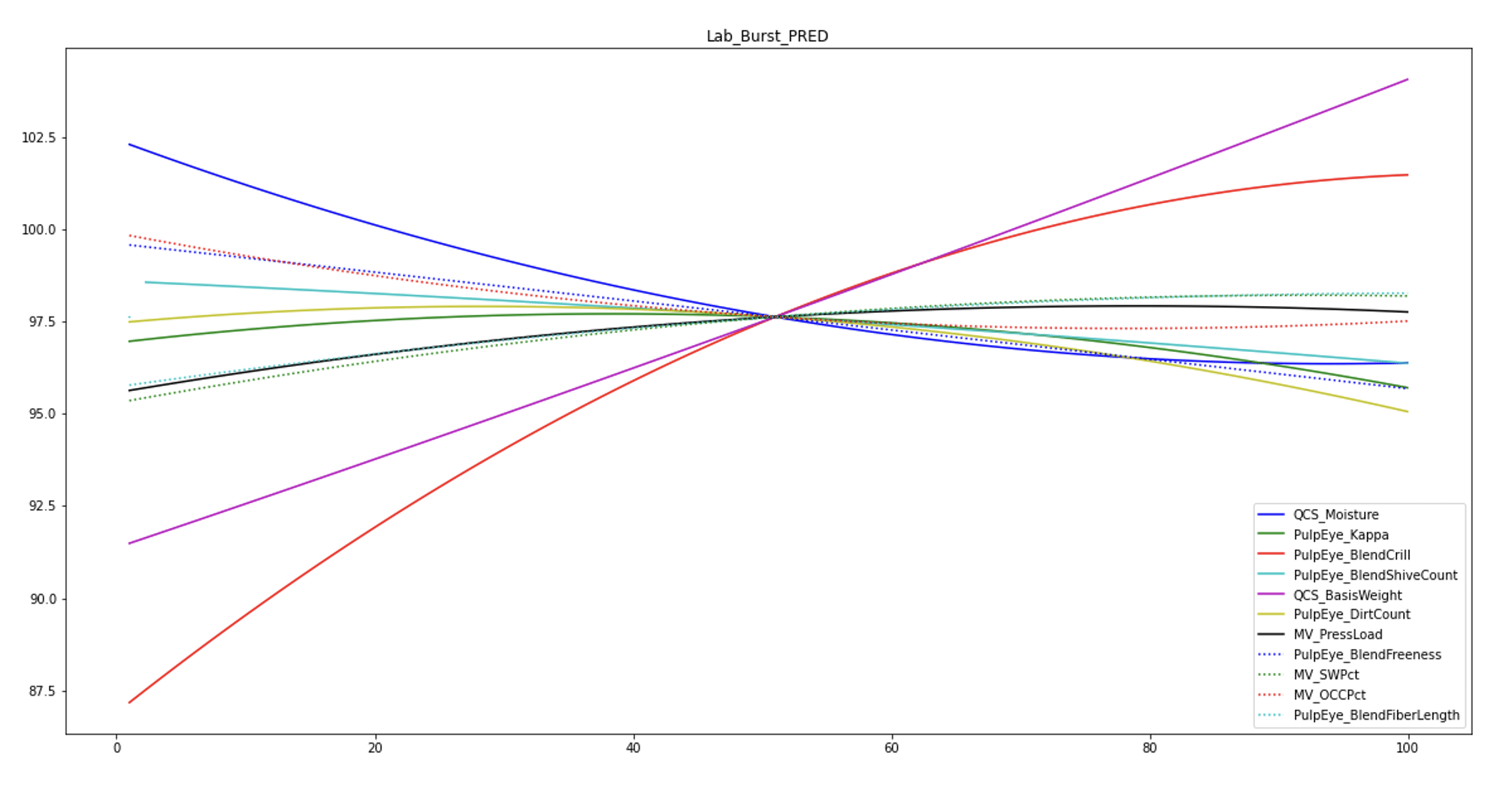
We can look specifically at the relationship of crill to burst strength in the plot below. Burst strength increases with crill due to the increased bonding area (often called RBA, Relative Bonding Area).
With PulpEye’s crill measurement, we can have an online indication that the inherent strength of the sheet has changed. If crill increases, there can be an opportunity to reduce chemical usage or change to lower-cost alternatives while maintaining our targets. Typically, strength properties have a target, which is the ideal specification. Still, a lower limit, the minimum value of the strength property, will allow it to be sold as prime. The best economic operation is to run comfortably just above this lower limit and minimize the risk of sub-prime production.
Imagine that our lower limit on burst strength is 95 psi for a 42 lb/ream sheet, but we normally run at 96 psi to be safely above the lower limit. Normally, our crill measurement of refined furnish is 180. The units of crill are a ratio of the surface area of both fibers and crill, so 180 means that the total area of the base fiber plus the hairy crill fibers is an 80% increase in the surface area of the base fibers alone. If PulpEye detects the furnish has an increase of crill to 220, the model shows a 3 psi gain in burst strength. We do not have this model without the grill measurement, and we do not know the impact of burst without this model.
If we know this in real-time, we can adjust manipulated variables that reduce our costs by taking us back down to the lower limit on burst. Commonly, base weight is used to meet strength targets. However, basis weight is also a specification. Therefore, there are not unlimited degrees of freedom on how much basis weight can be moved. When the grill was low, we had to set the basis weight to 43.5 lb/ream to meet our burst limit. Now that our crill has increased, causing burst to increase, we can decrease our basis weight to its low limit of 42 lb/ream. This reduces burst by 2 psi, but we are still above our burst limit. We could reduce burst further, but our basis weight limit does not allow using basis weight. This basis weight reduction will save on production costs while maintaining the burst specification, however we could have further savings by getting closer to our low limit on burst.
Basis Weight is not the only manipulated variable we have. One of the other variables we can move is freeness. In the example below, we usually run at 436 CSF. We can reduce burst by another 1 psi by increasing freeness (reducing specific energy) by 112 CSF. This gets us closer to our lower limit on burst while producing furnish that drains better on the wire, which increases production.
Having made these moves to basis weight and freeness, we are now operating at the low limit for the burst strength specification. The benefit is the cost savings from these adjustments. In the following analysis, we will assume the following:
- Typical production day is 1,000 gross tons/day
- The typical grade basis weight target is 42 lb/1000 ft2
- This production rate results in 47,619,047 ft2/day of the sheet at the reel, calculated as (1000 tons production/day) * (2000 lb/ton)/(Typical basis weight 42 lb /1000 ft2)
- There are 350 production days per year
- The scenario shown above where crill increases in the furnish is not a permanent condition. It occurs occasionally in the furnish. In this example, the percentage of time the crill measurement increases as shown above represents 10% of annual production time.
- The grade being considered sells for $660/ton and with operating cost $600/ton, resulting in a margin of 10% or $60/ton.
For the 1.5 pounds per ream drop-in basis weight, the cost savings are calculated as:
($600 cost/Ton of production) * (Ton/2000 lb) * (Basis weight reduction 1.5 lb/1000 ft2) * (Sheet area 47,619,047 ft2/day)= $21,428/day cost savings
Over the course of a year, these savings is:
($20,000/day cost savings) * (350 operating days/year) (crill measurement increase time 10%) = $750,000/year
When we increase freeness, we reduce the specific energy used in refining. Typical specific energy reduction from refiner curves in the literature show a 112 CSF increase, yielding a 1-megawatt hour/ton reduction in specific energy.
Based on recent energy prices posted on eia.gov, energy cost is commonly $80/megawatt hour. Using this data, we can calculate energy savings as:
(Reduced refining specific energy 1 megawatt-hour/ton ) * (1000 tons production/day)(Energy cost $80/megawatt hour) (350 operating days/year) (crill measurement increase time 10%) = $140,000/year.
This is not a large benefit in comparison, but it is always beneficial to lower energy demand when possible.
Additionally, increasing freeness improves drainage on the wire section of a paper machine. This allows the machine to run faster.
In the example, it is reasonable to expect a 5% production increase when freeness goes up by 112 CSF. The benefit of this production increase is:
(Margin $60/ton) * (1000 tons/day) * (1.05 production increase) * (350 operating days/year) (crill measurement increase time 10%) = $2,205,000/year
The total benefit of these changes amounts to $3,095,000/year on this paper machine.
However, we have not considered all possible benefits. We have only examined a few cases where one quality measurement and 2 manipulated variables were examined. In a typical paper machine,, many more quality measurements and manipulated variables can be used. Therefore, there is potential for even greater economic benefit.
Trying to determine these changes offline manually can present a daunting challenge. That is the benefit of multivariable predictive control (MPC). MPC is an online, automated solution that continuously optimizes your process to maintain your quality. Below is an illustration showing the quality measurements being controlled within their specified ranges.
Modern MPC implementations can also continuously retrain themselves to ensure you always achieve peak performance.
Let Pulmac be your partner in bringing crill into your automation to make your operation more profitable – contact our team today.

